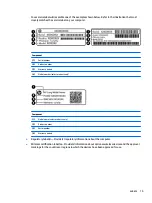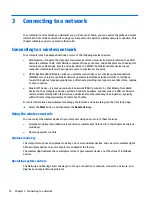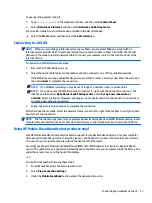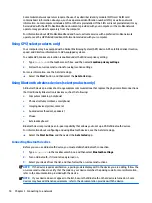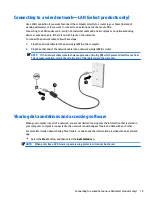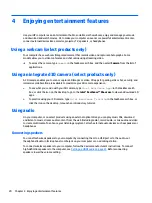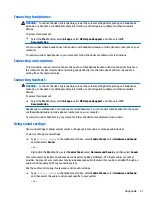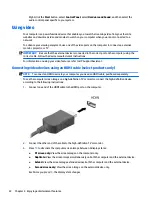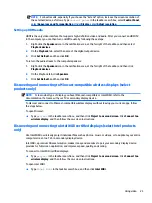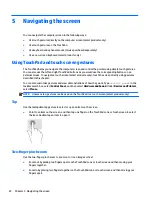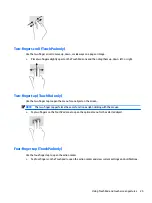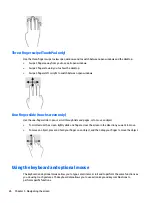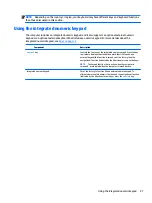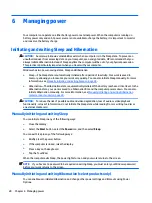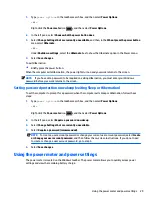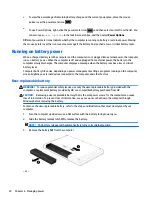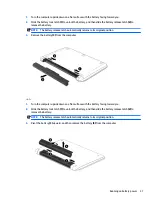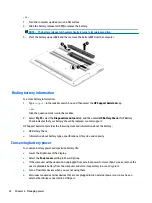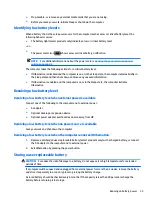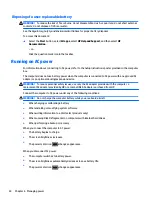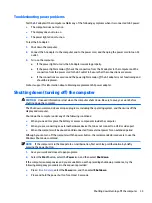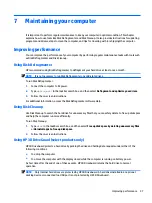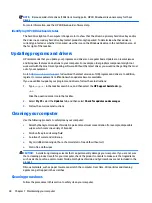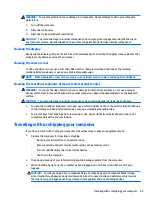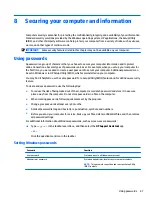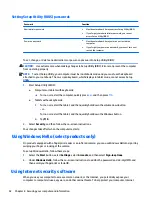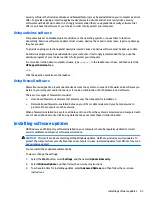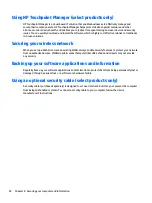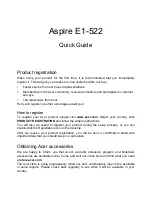
1.
Type
power options
in the taskbar search box, and then select Power Options.
‒ or –
Right-click the Power meter icon
, and then select Power Options.
2.
In the left pane, select Choose what the power button does.
3.
Select Change Settings that are currently unavailable, and then, in the When I press the power button
area, select Hibernate.
– or –
Under Shutdown settings, select the Hibernate box to show the Hibernate option in the Power menu.
4.
Select Save changes.
To exit Hibernation:
▲
Briefly press the power button.
When the computer exits Hibernation, the power lights turn on and your work returns to the screen.
NOTE:
If you have set a password to be required on exiting Hibernation, you must enter your Windows
password before your work returns to the screen.
Setting password protection on wakeup (exiting Sleep or Hibernation)
To set the computer to prompt for a password when the computer exits Sleep or Hibernation, follow these
steps:
1.
Type
power options
in the taskbar search box, and then select Power Options.
‒ or –
Right-click the Power meter icon
, and then select Power Options.
2.
In the left pane, select Require a password on wakeup.
3.
Select Change Settings that are currently unavailable.
4.
Select Require a password (recommended).
NOTE:
To create a user account password or change your current user account password, select Create
or change your user account password, and then follow the on-screen instructions. If you do not need
to create or change a user account password, go to step 5.
5.
Select Save changes.
Using the power meter and power settings
The power meter is located on the Windows taskbar. The power meter allows you to quickly access power
settings and view the remaining battery charge.
Using the power meter and power settings
29

